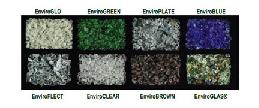
Rocket fuels do create environmental pollution, and the degree of pollution varies with the nature of the fuel used. Propellants containing high grade kerosene, rubber and chemicals like hydrazine, nitrogen tetroxide and nitrous oxide produce toxic products, while those constituting hydrogen and oxygen are much cleaner. Making a major breakthrough, the US military researchers have innovated a “green rocket fuel” that emits less corrosive and toxic chemicals than the conventional rocket propellants.
Rocket propellants require a hypergolic mixture, where the components are capable of igniting spontaneously as soon as they come in contact with each other. Producing a less hazardous hypergolic propellant is tough as the oxidizer and fuel need to achieve the required ignition point to give out the best performance. According to the propellant expert John Bellerby of Cranfield University, UK, hydrogen peroxide is a better option as the oxidizer releasing minimum amounts of hazardous chemicals, but finding a matching hypergolic fuel is tough.
Stefan Schneider and his colleagues of Air Force Research Laboratory at Edwards, California are highly optimistic about the use of hydrogen rich ionic-liquid as the green rocket fuel that will produce the same propelling force as the conventional rocket fuels. Schneider’s team is of the view that highly dense form of hydrogen ions can be created combining an ionic liquid with aluminum borohydride that produced complex anions being stabilized by the aluminum cations. The higher density of hydrogen will produce less toxic substances on burning.
Ionic liquids are nothing but salts that remain in liquid state at the room temperature. These are fast emerging as “green solvents” for the future due to its extremely low vapor pressure that produce less toxic vapors. This property makes them attractive replacements for hydrazine in the rocket fuels. The team experimented with trihexyltetradecylphosphonium (THTDP) chloride, where the negative chloride ion was substituted with the borohydride anion. The complex product (THTDP)BH4, when reacted with excess aluminum borohydride, produced an ionic liquid at room temperature containing higher density of hydrogen ions. The aim of the experiment was to increase the concentration of hydrogen to produce clean and green bi propellant.
Repeated tests have proved the hypergolicity of the hydrogen rich ionic-liquid fuels with hydrogen peroxide as the oxidizing agent, which can be considered as green bipropellants for the future. The researchers declared this type of ionic liquids as the pioneer in liquid bi propellants that will bring out better performance besides emitting less hazardous chemicals.
Via: RSC




